Barley Production Resources
From managing FHB and understanding chit, to battling herbicide-resistant weeds and optimizing your natural air drying (NAD) systems, SaskBarley provides resources to make it easier for you to grow quality barley in Saskatchewan.
Search the categories below:
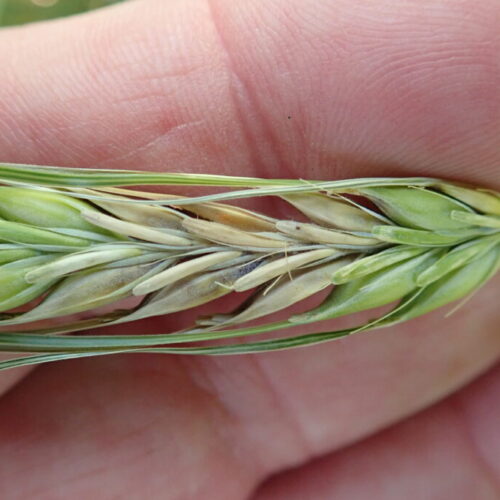
Managing Fusarium in Barley: Insights from Dr. Kelly Turkington
Discover expert advice for monitoring and managing Fusarium Head Blight (FHB) – one of the most challenging diseases for barley growers in Saskatchewan.

Malt Barley Seeding and Production Recommendations
Four malt barley agronomy and marketing experts provide malt barley seeding and production recommendations and discuss the agronomic and economic benefits of growing barley.
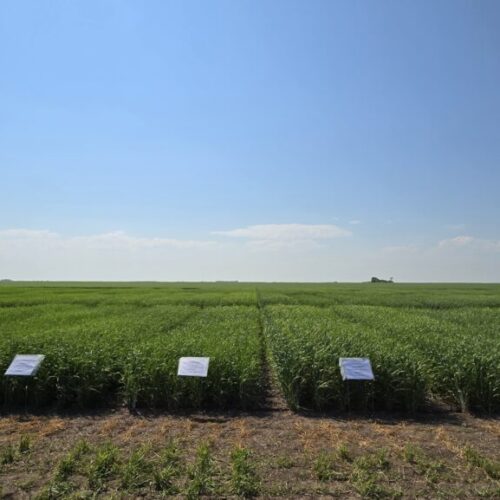
2024 Enhanced Barley Variety Trial Results – Yorkton, SK
Watch Mike Hall, East Central Research Foundation summarize the 2024 Enhanced Barley Variety Trials in Yorkton, SK, covering nitrogen, PGR, and fungicide efficacy results. See how these findings impact your barley production.
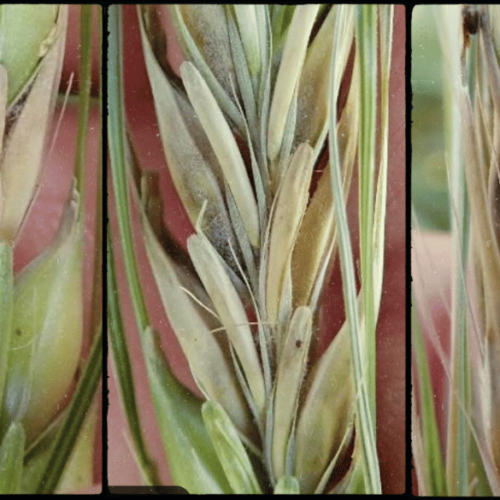
Risk maps are just one tool to help manage Fusarium Head Blight
This July 2024 update reveals varying risk levels of fusarium head blight (FHB) between crop types, with spring wheat showing higher risk compared to durum and barley.
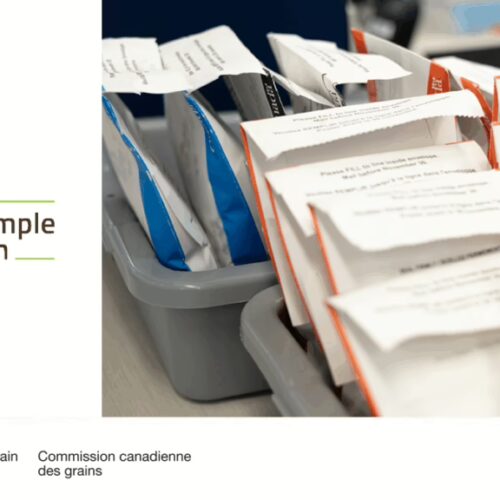
Harvest Sample Program Deadline and Drop-Off Options in Saskatchewan
The Canadian Grain Commission’s Harvest Sample Program is still accepting submissions. The deadline is November 30, but with the ongoing Canada Post service disruption, mail delays may affect delivery times.

Avoid Thin Kernels and Green Grain
Thin kernels and green grain are two of the biggest culprits behind rejected malt barley samples—and they often show up together. Learn how they happen and what you can do about them.
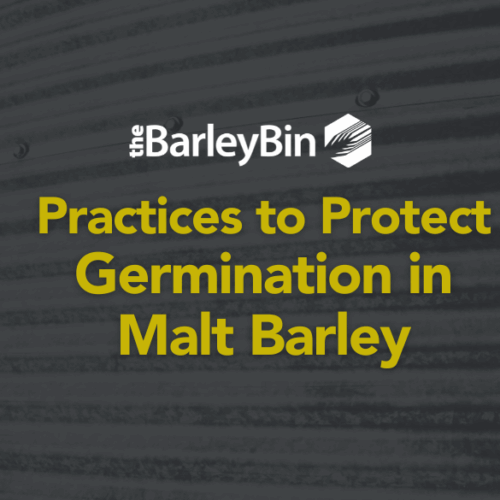
Practices to Protect Germination in Malt Barley
Learn about barley germination and how harvest timing, moisture and storage management can protect malt quality.
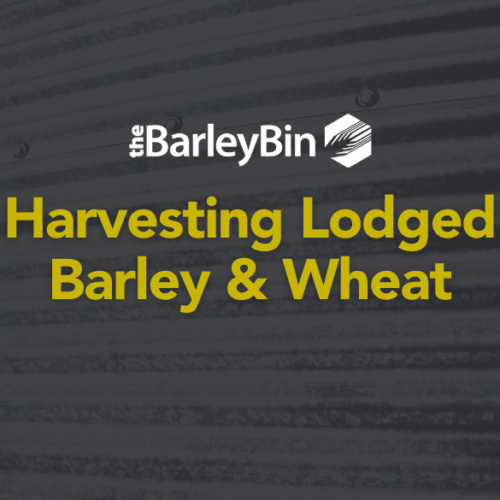
Harvesting Lodged Barley and Wheat
Discover expert strategies for managing lodged barley and other cereal crops. Learn how to reduce harvest losses, protect grain quality, and improve yield with practical tools and techniques.
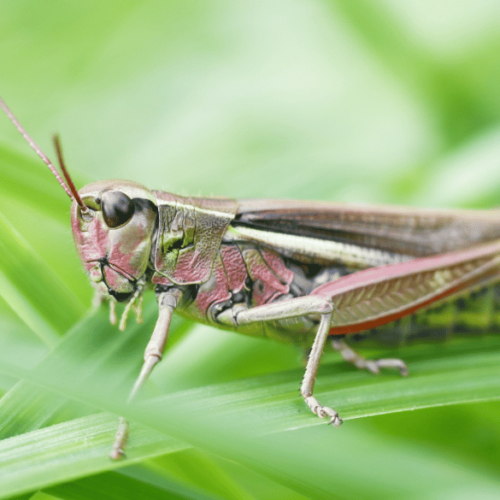
Insecticide Options for 2025
Explore this quick reference guide to insecticide options for 2025 tailored to Saskatchewan farmers. Get threshold guidelines, crop-specific recommendations, and IPM strategies to protect your yield.
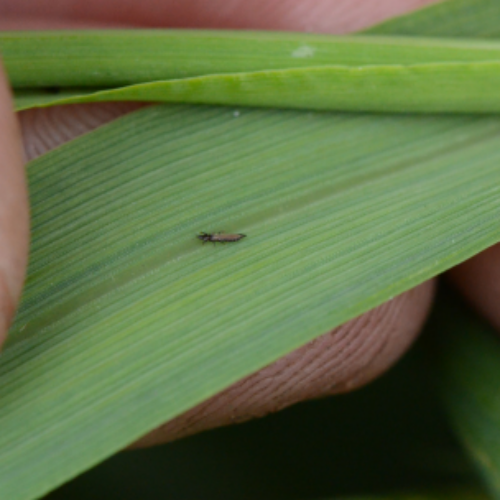
The Trouble with Thrips: How to Identify and Manage This Cereal Pest
Dr. James Tansey of the Saskatchewan Ministry of Agriculture outlines all you need to know about scouting and calculating the economic damage caused by thrips in barley.

Lambda Cyhalothrin (Matador®, Silencer®, etc.) Update
In 2023, the Pest Management Regulatory Agency (PMRA) ruled that lambda cyhalothrin (trade names include Matador®, Silencer®, etc.) uses must be restricted. PMRA is the division of Health Canada responsible for reviewing safety data for pesticides.

Insecticide Options and Pest Management Strategies for 2024
Welcome to our comprehensive quick reference guide for insecticide options and pest management strategies. In this document, we provide a concise overview of key insecticide options, and threshold guidelines to optimize crop protection and enhance yields. Read more…

Regenerative Agriculture Insights for Barley Producers in Saskatchewan
Explore regenerative agriculture strategies for barley production in Saskatchewan. Learn how soil health, cover crops, and sustainable practices can boost yields, reduce input costs, and improve resilience for prairie farmers.

Producer Guide to Maintaining Varietal Purity in Canadian Malting Barley
Learn how to maintain ≥95% varietal purity in malting barley. Actionable steps, common mistakes, and best practices for Canadian farmers.
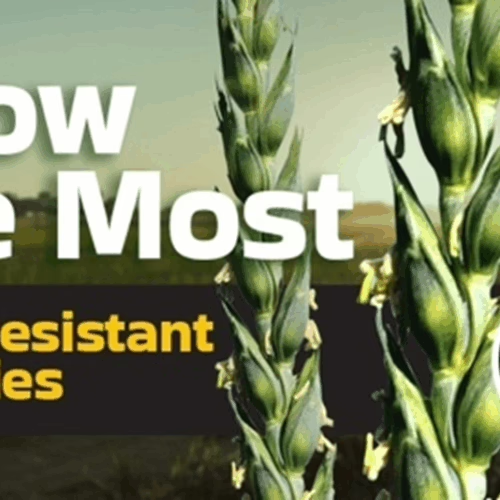
Fight Fusarium Head Blight: Choose Barley Varieties with FHB Resistance
Discover malt and feed barley varieties with the most FHB resistance and understand how fusarium can affect your crop management and marketing plan.
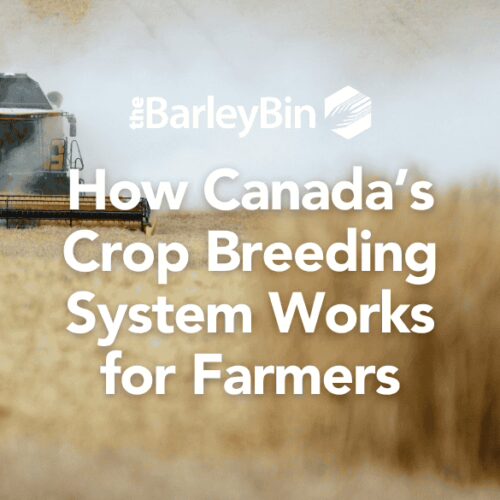
How Canada’s Crop Breeding System Works for Farmers
Discover how Canada’s crop breeding system supports farmers through rigorous variety registration, plant breeders’ rights, and sustainable innovation. Learn how public and private sectors collaborate to deliver high-performing barley and cereal crops.
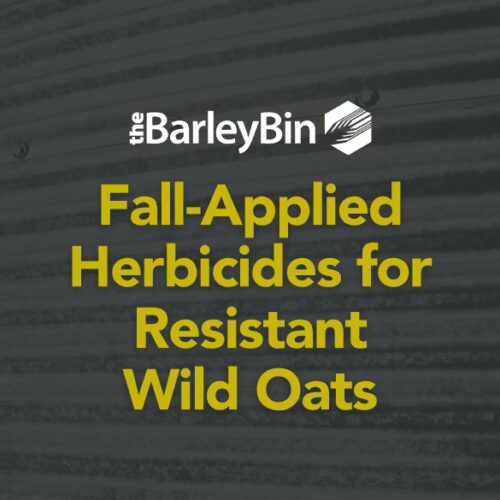
Fall-Applied Herbicides for Resistant Wild Oats
Fall-applied granular herbicides (Groups 3 & 8) offer consistent wild oat control and resistance management. Learn why fall is the best time to apply.

Malt Barley Seeding and Production Recommendations
Four malt barley agronomy and marketing experts provide malt barley seeding and production recommendations and discuss the agronomic and economic benefits of growing barley.

Understanding Herbicide Resistance Tests
Learn how to interpret your herbicide resistance tests so they can help combat wild oat resistance effectively.
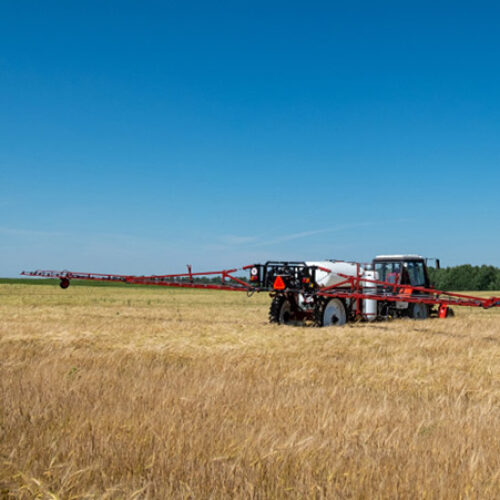
Feed Barley: Pre-Harvest Glyphosate Staging for Weed Control
Do not apply pre-harvest glyphosate to your cereal crops when the grain moisture is above 30%. This could leave unacceptable residue levels and impact the marketability of your grain. Use the thumbnail test to determine whether your grain is at the appropriate stage of maturity.
Barley Production Resources
From managing FHB and understanding chit, to battling herbicide-resistant weeds and optimizing your natural air drying (NAD) systems, SaskBarley provides resources to make it easier for you to grow quality barley year-after-year.
Search the categories below:
Managing Fusarium in Barley: Insights from Dr. Kelly Turkington
Discover expert advice for monitoring and managing Fusarium Head Blight (FHB) – one of the most challenging diseases for barley growers in Saskatchewan.
Malt Barley Seeding and Production Recommendations
Four malt barley agronomy and marketing experts provide malt barley seeding and production recommendations and discuss the agronomic and economic benefits of growing barley.
2024 Enhanced Barley Variety Trial Results – Yorkton, SK
Watch Mike Hall, East Central Research Foundation summarize the 2024 Enhanced Barley Variety Trials in Yorkton, SK, covering nitrogen, PGR, and fungicide efficacy results. See how these findings impact your barley production.
Harvest Sample Program Deadline and Drop-Off Options in Saskatchewan
The Canadian Grain Commission’s Harvest Sample Program is still accepting submissions. The deadline is November 30, but with the ongoing Canada Post service disruption, mail delays may affect delivery times.
Avoid Thin Kernels and Green Grain
Thin kernels and green grain are two of the biggest culprits behind rejected malt barley samples—and they often show up together. Learn how they happen and what you can do about them.
Practices to Protect Germination in Malt Barley
Learn about barley germination and how harvest timing, moisture and storage management can protect malt quality.
Insecticide Options for 2025
Explore this quick reference guide to insecticide options for 2025 tailored to Saskatchewan farmers. Get threshold guidelines, crop-specific recommendations, and IPM strategies to protect your yield.
The Trouble with Thrips: How to Identify and Manage This Cereal Pest
Dr. James Tansey of the Saskatchewan Ministry of Agriculture outlines all you need to know about scouting and calculating the economic damage caused by thrips in barley.
Lambda Cyhalothrin (Matador®, Silencer®, etc.) Update
In 2023, the Pest Management Regulatory Agency (PMRA) ruled that lambda cyhalothrin (trade names include Matador®, Silencer®, etc.) uses must be restricted. PMRA is the division of Health Canada responsible for reviewing safety data for pesticides.
Regenerative Agriculture Insights for Barley Producers in Saskatchewan
Explore regenerative agriculture strategies for barley production in Saskatchewan. Learn how soil health, cover crops, and sustainable practices can boost yields, reduce input costs, and improve resilience for prairie farmers.
Producer Guide to Maintaining Varietal Purity in Canadian Malting Barley
Learn how to maintain ≥95% varietal purity in malting barley. Actionable steps, common mistakes, and best practices for Canadian farmers.
Fight Fusarium Head Blight: Choose Barley Varieties with FHB Resistance
Discover malt and feed barley varieties with the most FHB resistance and understand how fusarium can affect your crop management and marketing plan.
Fall-Applied Herbicides for Resistant Wild Oats
Fall-applied granular herbicides (Groups 3 & 8) offer consistent wild oat control and resistance management. Learn why fall is the best time to apply.
Malt Barley Seeding and Production Recommendations
Four malt barley agronomy and marketing experts provide malt barley seeding and production recommendations and discuss the agronomic and economic benefits of growing barley.
Understanding Herbicide Resistance Tests
Learn how to interpret your herbicide resistance tests so they can help combat wild oat resistance effectively.

